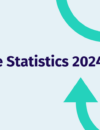
The first few months of the year are all about making goals, firming up plans and reigniting that spark within you. While we believe you can make plans and ‘resolutions’ all year round (it’s never too late!) we know that there’s something irresistible about setting some objectives in January and February. So, where do we start?
You’d be forgiven for assuming Diversity and Inclusion (D&I) efforts in business and the workplace are on an upward trajectory. US-based executive search firm Heidrick and Struggles (H&S) recently found that “93% of US leaders consider D&I to be more important now than ever before” and according to Indeed, there was a 123% increase in jobs in D&I by May 2020. While there are positives and progress to be found, it’s safe to say 2023 finds us in a precarious and, as H&S put it, ‘stagnant’ state.
The cost of living crisis and tightening budgets means that investment in D&I is falling to make way for more ‘essentials’. D&I leaders are resigning and leaving posts due to burnout or being unsuitable for the role. Furthermore, numbers are still shockingly low if we look at the diversity of the working community: as we reported last year, only 19.7% of employees on company or organisational boards are women, and global majority employees hold only 1 in 16 top management positions in the UK.
It seems to us that the push for D&I in the workplace in recent years has slowed, and even stumbled, despite global events.
Wouldn’t it be amazing to make lasting change, rather than reactive, short-term progress? Let’s make 2023 the year we tackle this within our organisations.
By making these changes and improvements in how we work, we can influence wider society. We are starting this year in an unsettled and disenchanted society, with social action being taken through increasing strikes and protests. Businesses and organisations are looked to more and more as forerunners in making this world a better place: we are being asked what we are doing to address the climate crisis and political instability as much, if not more often, than the government.
So what should we be focusing on over the next twelve months? Where can we start?
Find your purpose
All good planning sessions start with a list; your D&I promises should be no different. Set tangible actions and goals for what you want your team, department, or company to achieve by a certain point in the year – or even further into the future. The journey is long, but if you can map it out, you will be able to measure your progress and keep travelling in the right direction.
Remember, there’s nothing wrong with a detour: you can always work in an agile way and adjust your plan as you learn more – but it’s important to start somewhere.
Invest money, not just time
Put your money where your mouth is. It’s all very well making pledges for a more equitable future for your employees and colleagues, but often real change doesn’t come for free.
Money is tight right now for everyone, but investing financially in D&I will ensure the changes you make are permanent and high quality. Plus, your promises will be taken more seriously; Create schemes within the workplace, reinvent your hiring process, offer training and find ways to retain your diverse workforce.
Since diverse and inclusive corporations “are 35% more likely to outperform their competitors” and “70% more likely to capture new markets”, you’re probably going to end up getting that money back – and then some!
Recruit the best talent
We’ve told you to invest real money into your recruitment process for good reason. According to Glassdoor, “76% of job seekers and employees today report that a diverse workforce is an important factor when evaluating companies and job offers”. What’s more, inclusivity equals creativity, with inclusive companies being 1.7 times more likely to be innovative.
Ensuring your recruitment process is as inclusive and accessible as possible will ensure you attract more, and better, applicants from all walks of life. These people bring new ideas, perspectives and attitudes, which will benefit how you work, and what you do as an organisation.
You’ll have a better team and a better business. It’s a win-win.
Measure those KPIs
So many of us claim to make data-driven decisions, and organisations are usually hot on providing KPI updates on things like finances or user experience. D&I, aptly, should be treated exactly the same.
Tracking D&I and cultural data will help you work out what’s working and what’s not. You’ll be able to update your goals and refocus your investments where it matters. You could do this through surveys, feedback sessions and data captured from recruitment activities, for example. It’s also a great way to listen more to your employee community and maintain that inclusive, collaborative environment.
Just be sure to act on the findings and implement those improvements.
Give your D&I leaders more power
We mentioned the challenges faced by D&I leaders earlier. Indeed, Korn Ferry reports that Chief Diversity Officers at large firms only last for 2 years on average. We can’t imagine that’s enough time to make a lasting impact on an organisation.
While there are likely many reasons for this high turnover and low retention rate, it could be that many D&I leaders are feeling undervalued and under-resourced. VP of Diversity, Inclusion and Belonging at Upwork, Erin Thomas, recently spoke to Essence about how “the risk factor that is most prominent for DEIB leaders is the perceived lack of control.”
Make sure your D&I teams aren’t just for show, or part of a tick-box exercise. Give them the authority to make an impact, override any corporate barriers they might encounter, or a budget they can confidently wield.
At Druthers, it’s our mission and our passion to empower organisations to find the best person to make an impact on their work, from a diverse shortlist of remarkable talent. Get in touch with us to find out how your business can make a positive change to your hiring and retention processes.





